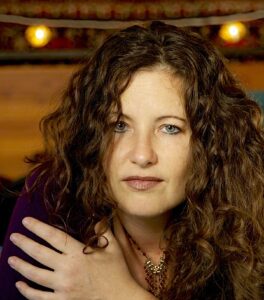
Today we welcome a guest blogger with some serious creativity cred. Melinda Rothouse is the founder of Austin Writing Coach and the co-founder of Syncreate. Based in Austin, Texas, she’s a writing, creativity and communications coach and consultant. She brings to her work a background that spans everything from music to Buddhist meditation. Melinda is working on her doctorate in psychology with a specialization in creativity studies at Saybrook University in San Francisco. We’re so grateful she had time to share some thoughts on creativity and connection with us.
Why do some creative partnerships and working relationships thrive, while others crash and burn, or simply stall out? What qualities should you look for in people or organizations that you choose to collaborate with, and continue to work with over time? In my experience, it’s not simply about who has the best credentials, ideas or raw “talent.” I feel most inspired to collaborate with people I feel a strong connection to, who make me laugh or look at things in a new way and whom I trust on a gut level.
Turns out I’m not alone; studies of organizational creativity show that emotional and interpersonal dynamics play a huge role in creativity and collaboration. When I met my future business partner, Charlotte, I was struck by her genuineness and her self-deprecating humor. I felt I could share my challenges and frustrations with her and that she could relate. We started meeting regularly at a coffee shop to talk through a project we were working on together, and each week (with the help of a latte or two), the ideas just flowed. We began to think bigger and braver than the immediate project, and decided to found Syncreate together to help illuminate the creative process for others.
The reverse is also true, of course. Innovation often comes to a grinding halt when we clash with our collaborators or supervisors, when we don’t feel heard or when we suspect they don’t have our best interests at heart. For example, I once worked with a very ambitious colleague who treated people very differently depending on their positions within the organizational hierarchy, often coming across as insincere and condescending. Needless to say, collaborating with him felt problematic to me, and when he became my supervisor, I decided to leave the company.
What it boils down to is a willingness to open and share our true selves with others, which builds empathy and trust. Consider the example of Sarah, who was preparing to present a report to the board of a nonprofit she had been working with for several months. Just before the presentation, she realized some of her numbers were off, and she had to redo her reports, which made her a few minutes late for the meeting. Feeling flustered and embarrassed, she could have made excuses or retreated into an overly “professional” or distant demeanor. But instead, she simply and genuinely shared her experience (including her discomfort) with the board members, which immediately built a sense of camaraderie among the group. Her presentation was a success, and Sarah came away from the meeting feeling that the board members had become her allies, rather than mere professional colleagues, which in turn fostered a successful ongoing collaboration.
In approaching your next creative collaboration, keep in mind these ways to foster trust, connection and creativity:
- Listen. Really listen to what others are saying, and pay attention to body language and emotional cues. Try not to think about what you want to say next or how their words affect you. Just listen and be present. This is one of the best gifts you can give to another human being in any context.
- Share. Be open, even vulnerable in your communication. Share a personal story, even if it’s silly or embarrassing. This demonstrates that you’re a real person and not just a “colleague.” Neuroscience research shows that sharing our personal stories with others builds empathy and trust, because we begin to relate to each other more directly and “feel each other’s pain,” as well as joy.
- Be real. When we are genuine, people feel it on a visceral level, and they know they can trust what we say and do. On the other hand, when we act insincere, pretentious, arrogant, standoffish or overly professional, it puts people’s guard up. It may sound counterintuitive, but letting others see our quirks and our weak points actually draws them closer and makes it easier to share ideas.
Try these practices in your creative collaborations, and pay attention to how they affect not only your working relationships, but also the quality of creative work you produce.